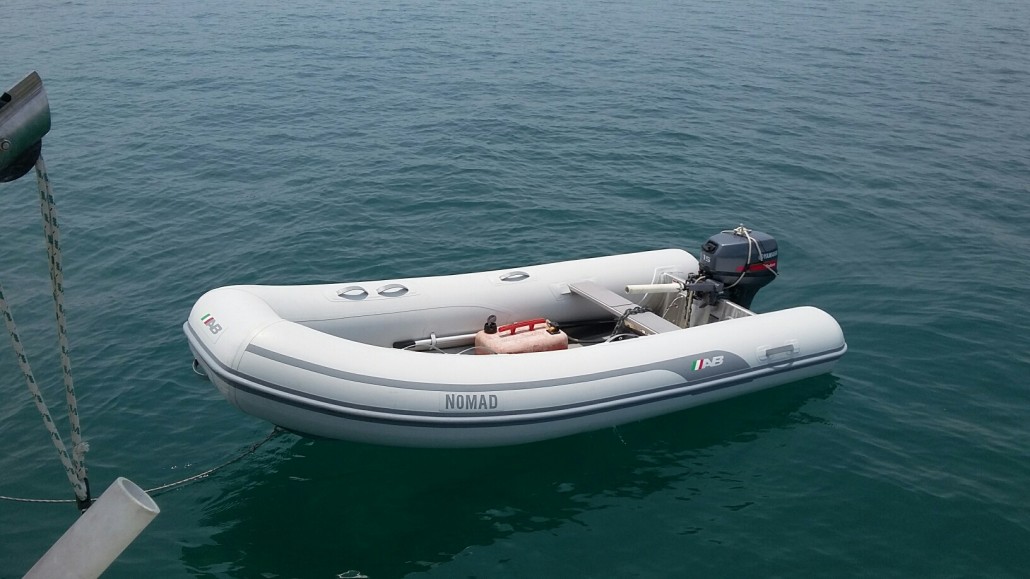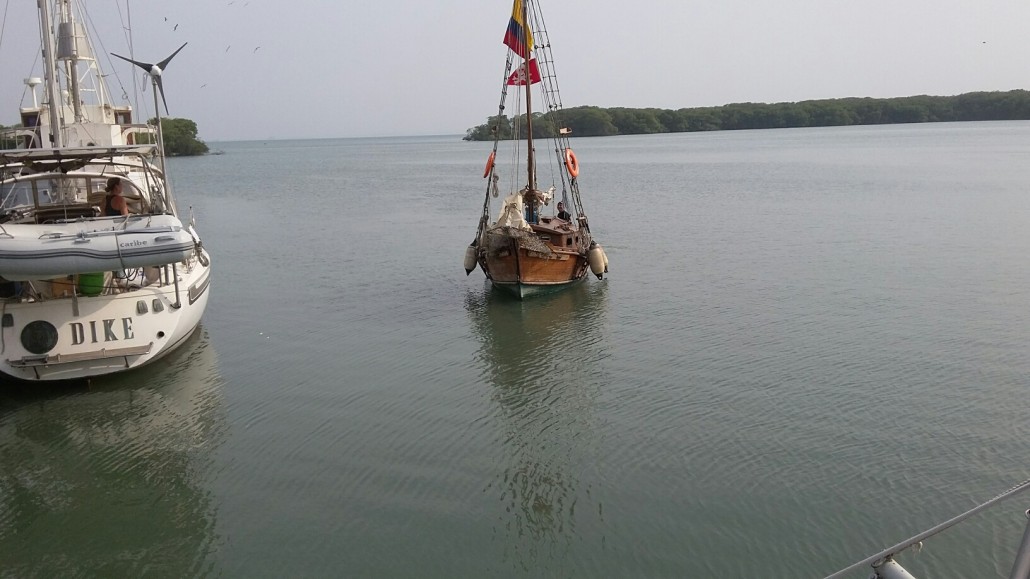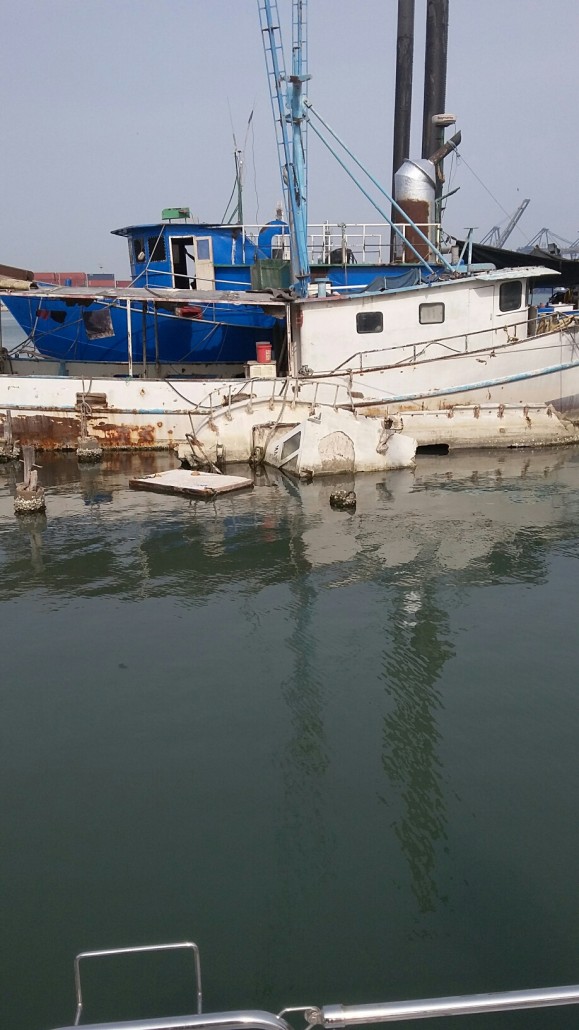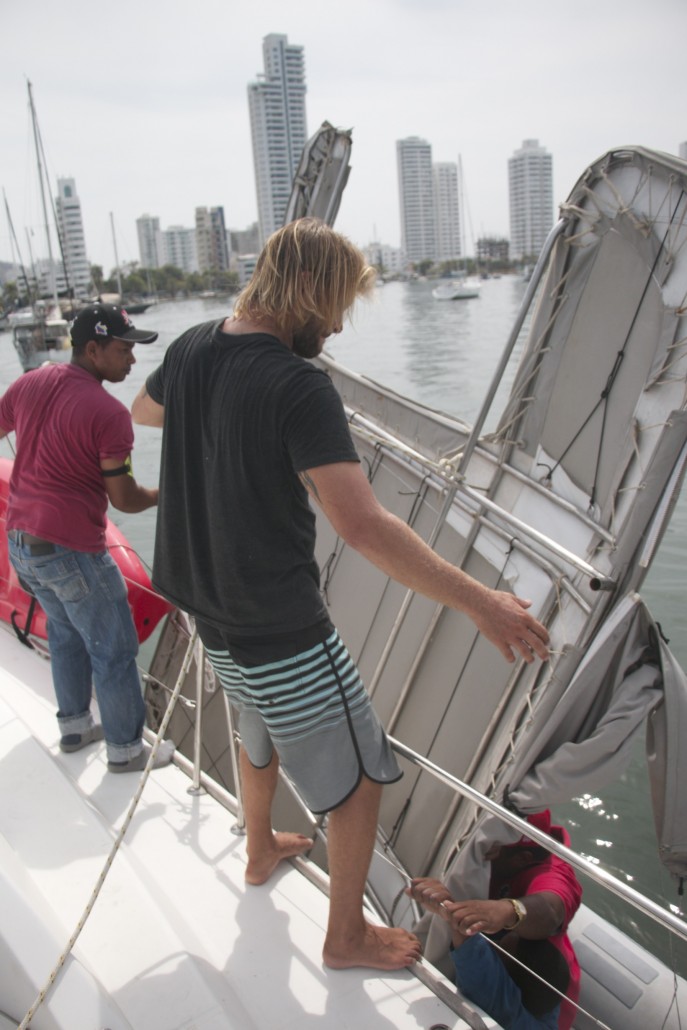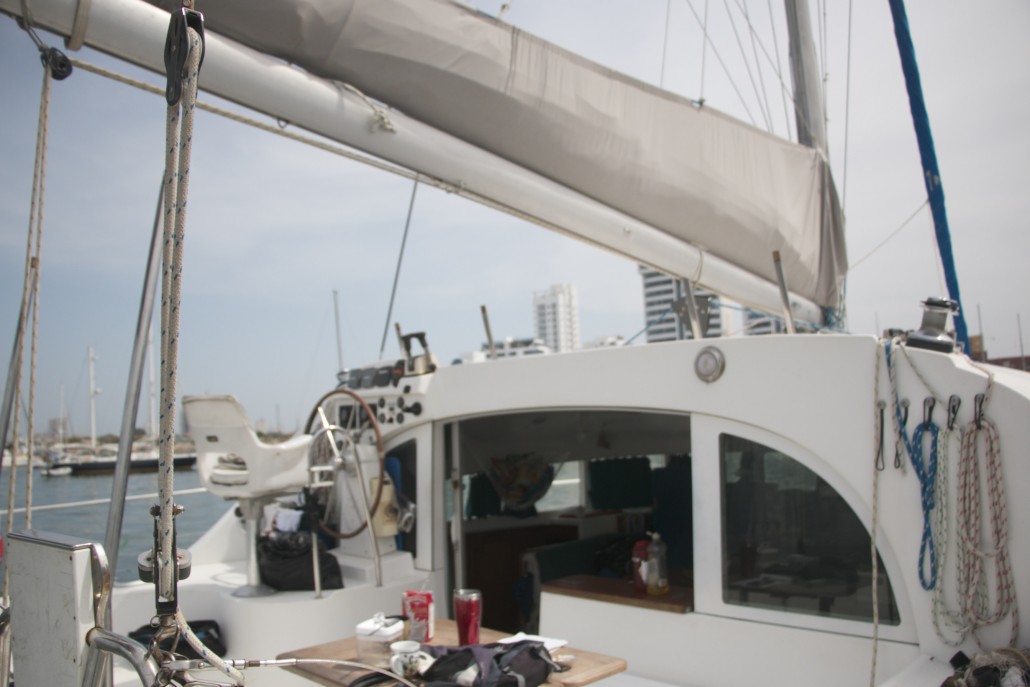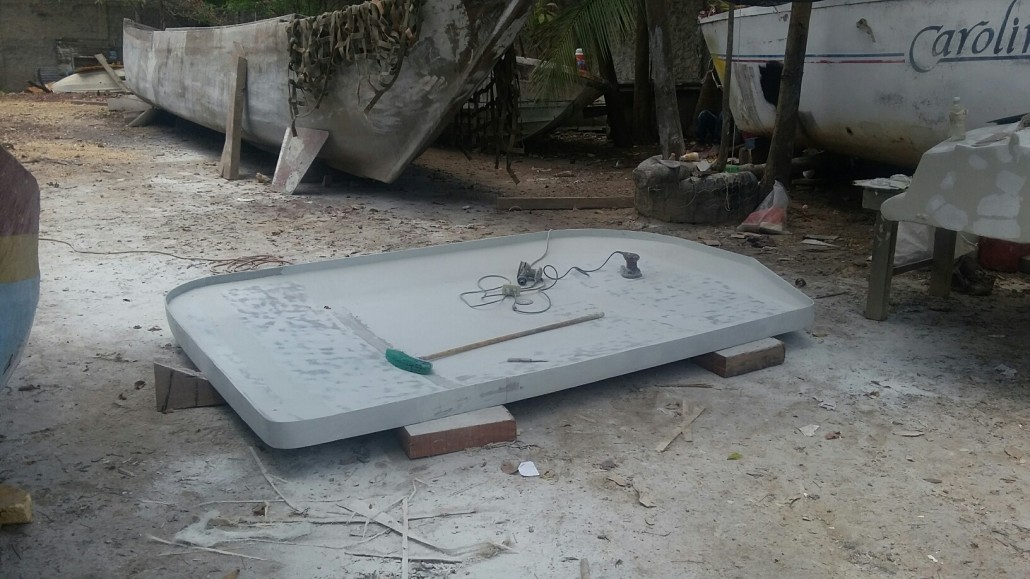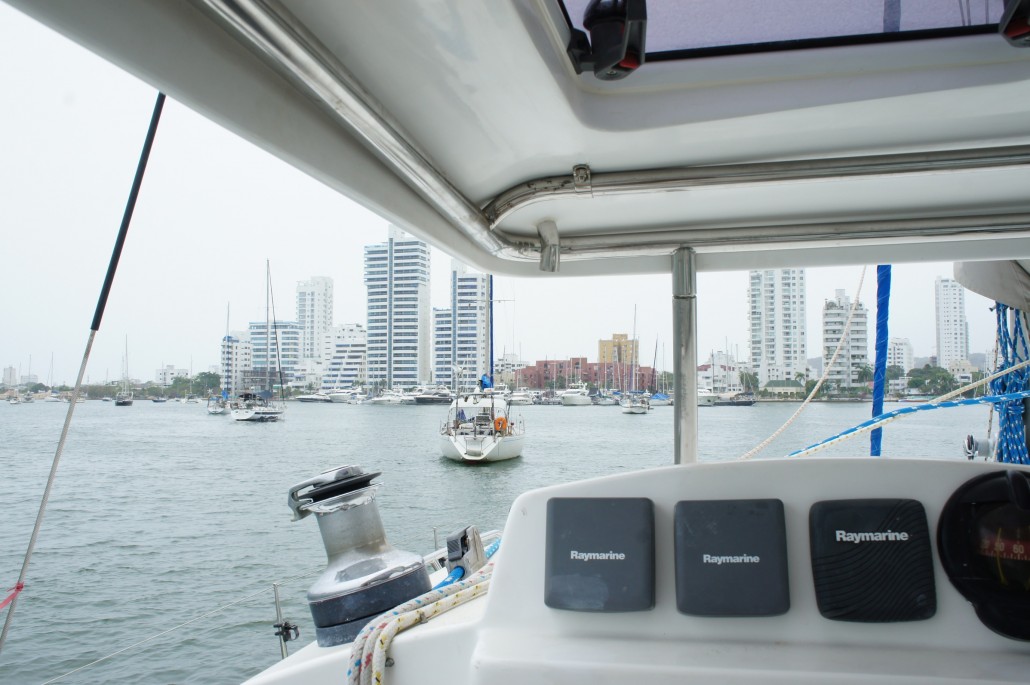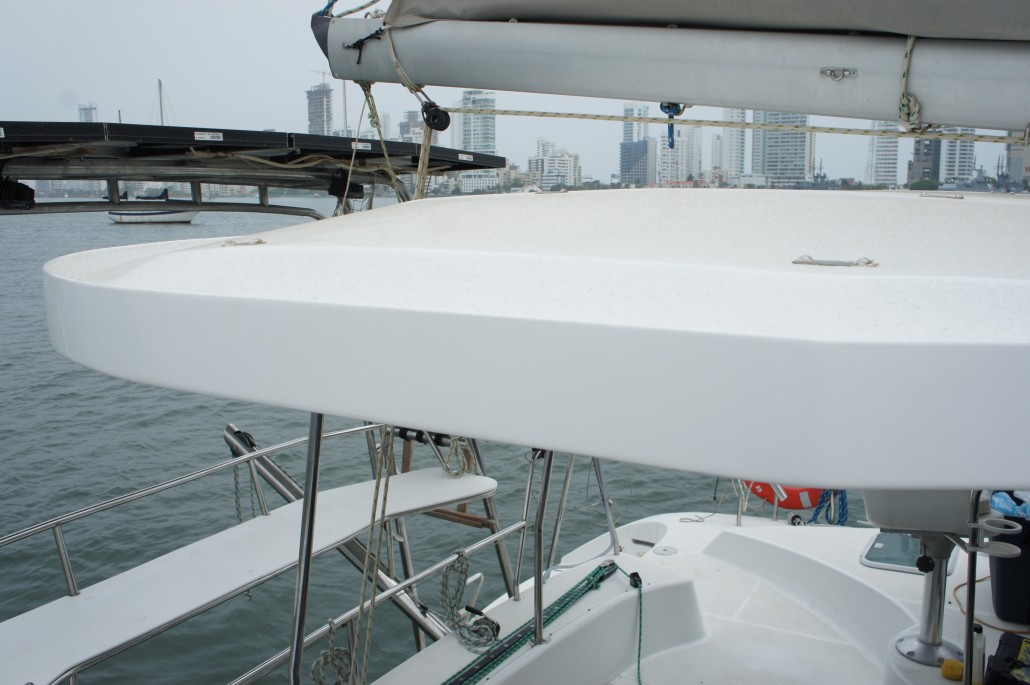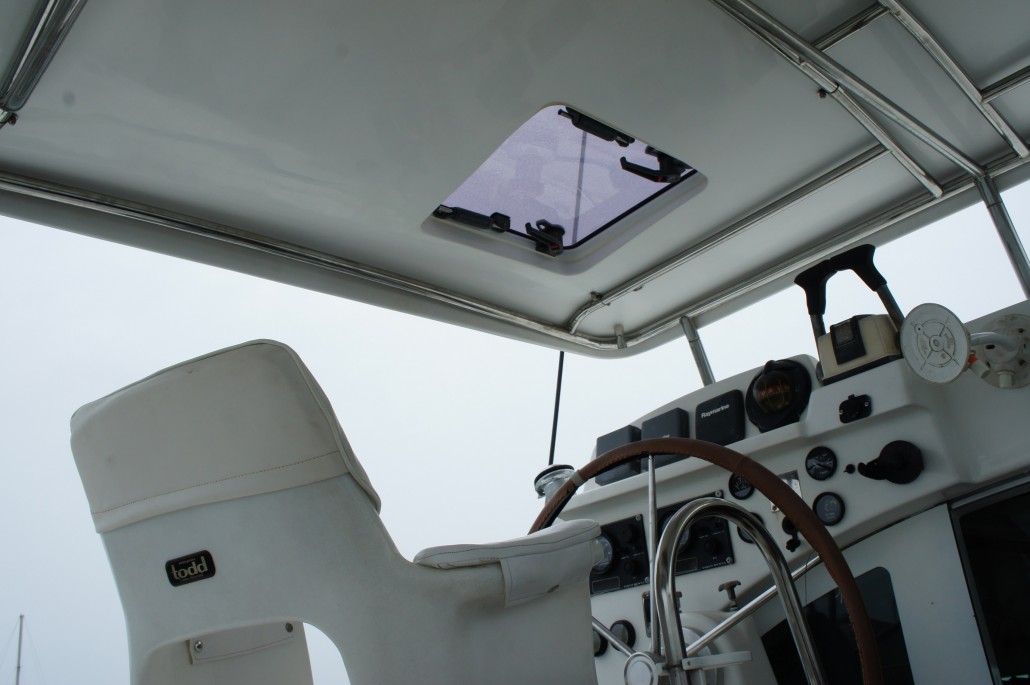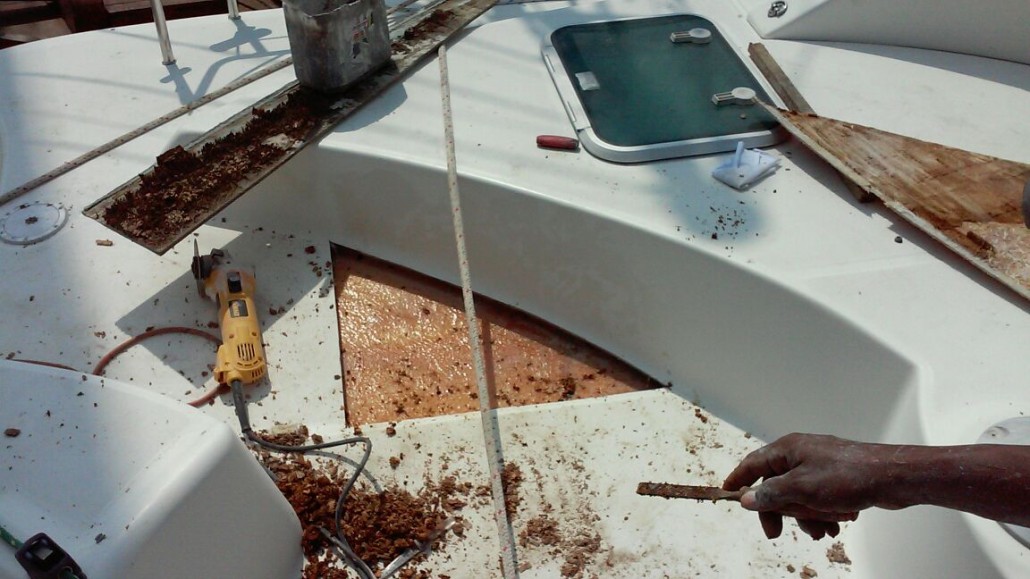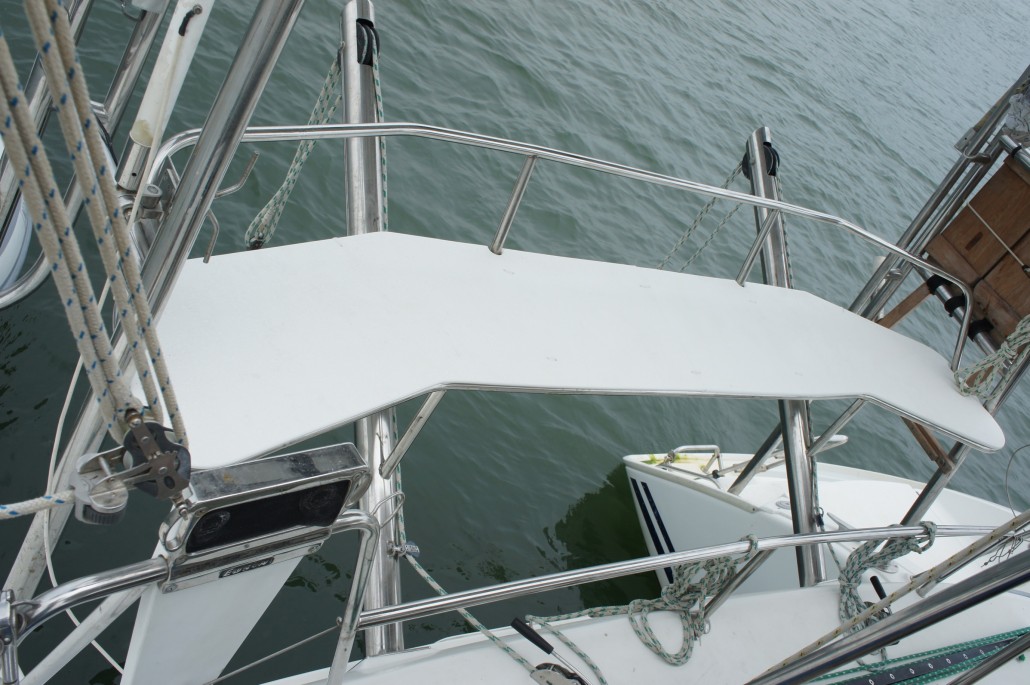I had a dinghy. It was a decent dinghy. It had lost air only once in the history of me owning it and only leaked a bit of water. Not a big deal. It didn’t look great, but this isn’t a fashion show. All that said, I am very skeptical that it would last another four or five years. To me, my dinghy and dinghy engine are almost as important as the mothership S/V NOMAD – because I explore, dive, and fish from my dinghy. As a matter of fact, it’s the source of the most fun and entertainment I have onboard, hands down. Oh, and it hauls water, food, fish, people, workers, equipment, tools… You get the point – everything that comes to S/V NOMAD, comes via my dinghy.
Knowing that my current dinghy was iffy (for the next five years) it made more sense to me to buy a new dinghy now – and get the benefit of it now – rather than buy one later after I had patched and re patched and fought with my old dinghy. So I decided to replace my old dinghy while I could still sell it.
Buying a New Dinghy
There are a myriad of choices in dinghies now. I wanted to dive with mine. Meaning that it needed to be easy to dive from, stable, lightweight, and tough. Most cruisers simply use their dinghy to go to land occasionally. For me, I use the dingy for everything fun. That really leaves me with two options: a large hard dinghy or a large RIB inflatable.
I looked at a variety of dinghies, got quotes from everywhere and talked with a thousand different people about dinghies and designs and options. I would have preferred a good hard-dinghy (because they never deflate) but they are remarkably heavy when compared to inflatables, and one thing I don’t need onboard is more weight. I was specifically looking at the Livingston boats, they still appeal to me, but again – the weight was the issue. Weight stresses davits and adds weight to my catamaran, which is already a heavy boat. This left me with only once design choice: RIB.
Within RIBs (Rigid Inflatable Boats, a combination of a hard-bottom and inflatable tubes as sides) – there are a myriad of options, brands, etc. The newest development in this marketplace is the use of aluminum as the material for the bottom of the RIB. This has several advantages: it is very light, it is very strong, and it is resistant to scratching or holing if driven over a reef or when pulled up onshore. Basically, they’re one step closer to bulletproof, while being extremely light. That appealed to me because I needed a lightweight, tough dinghy that is larger than the one I am replacing. The problem here is that they are very, very expensive. The more economical option is the fiberglass dinghy but it is heavy and not as tough, given the same size.
So this was my dilemma. When I began my research, it looked like the 11 foot aluminum dinghies would be out of my budget – many of the prices coming in around $7K, which is absolutely outrageous. I was set on the 11 as I felt like I needed more room for diving, and (in the AB line) the 11 footer had a much thicker hull than the 10 footer – while being lighter than my current 10 foot fiberglass dinghy.
I talked to enough people and eventually found out that AB Inflatables (who is the leader in aluminum RIBs) actually has a factory in Colombia, where I would soon be. Through a friend I was able to get in touch with the factory sales rep and start questioning him. The quotes he provided were very reasonable, compared to prices elsewhere for AB aluminum dinghies, which made me seriously consider the aluminum again.
Of course, there were issues. I had a brand-new Yamaha Enduro 15 HP outboard. The problem is that it was short-shaft and the AB 11 foot aluminum (AB AL 11) required a long-shaft outboard. I considered buying a long-shaft outboard, but the prices in Colombia were astronomical compared to Panama, when I finally got a quote. This made me balk. The last thing I wanted to do was cause more problems for myself. Bear with me though, as that’s exactly what I did…
After thinking and talking and a million different emails I decided to not get the AB AL 11, due to the issue of the short/long shaft outboard. I conveyed this to the sales rep, he quickly replied that they would make a custom version of the AB 11 AL for me, so I wouldn’t have to buy a long-shaft outboard. This was great news, and it pushed me toward buying the dinghy. The downside was that it would take 6-8 weeks to get the dinghy and it would be delivered in Colombia – meaning I couldn’t have it right away and I would absolutely need to get to Colombia if I did, indeed, buy the dinghy.
To make a long story short, I hemmed and hawed and eventually decided to pull the trigger. This was an “investment” in my future trouble-free freediving, spearfishing, and exploring. It wasn’t too hard to convince myself, except for the wallop my pocketbook would take. But I did it. I placed the order.
But due to intermittent internet access, some strange credit card rules with AB, and the reputation Colombia has – I didn’t actually place the order for two weeks after I originally sent in my credit card info. Typical cruising problems.
Mo Dinghy, Mo Problems
The good news is that I got the dinghy the other day. It’s beautiful, I love it, and it really does making diving and exploring so much better and more fun. Adding to my cruising experience is something best done at the beginning of this adventure, i reckon – so this is all good.
The bad news is that after I got it out to the boat, because of the arrangement of my arch, the closeness of the hulls, and the design of the davit-system – this dinghy is very close to working in my current setup – but doesn’t. I could make it work, as is, but it would require two people to lift the damn thing – and that’s just not intelligent. There are many a time when I lift the dinghy alone.
This was heartbreaking, but could have been avoided. I’ve become fairly adept at kicking my own self in the ass. The real kicker is that I would now not be able to raise my dinghy at night. And there’s nothing more appealing than a brand-new dinghy and a brand-new Yamaha Enduro 15 – to the thieves in this part of the world. I was able to borrow a heavy chain to lock the dinghy to the mothership while I sorted out my davit issue.
The davit issue was a real one. Even as I write this it’s not totally sorted. But we’ve made some progress and welding began on the solution already.
The solution was fairly apparent, but the devil is always, always in the details. Especially when you’re talking about welding heavy-duty stainless onto an existing structure in the hopes that it will not only lift your dinghy – but take shock loads when the dinghy is slamming around back there in bad weather. This had to be absolutely, totally correct. Overbuilt should be an understatement.
And since I’m having this done, I might as well correct another issue that was designed into the construction of the boat – a low-hanging davit system. A low hanging davit system can mean real trouble if you have a following sea and you catch a breaking wave, into your dinghy hanging on said davit system – that means the whole structure on the back of your boat get’s ripped off. You don’t just lose your dingy – you may very well lose your boat. A fairly serious concern.
I was lucky (?) in that I had an existing heavy-duty arch which I could add onto. That’s a big deal and most people don’t have this heavy-duty of an arch, especially on catamarans. I lucked out.
Since this needed to be 100% correct, I went into town, bought a 2×4 and cut it into two pieces. Then we mocked up what I thought would be the right solution and then I brought out the welder and other people smarter than me to help me with the solution. After an hour or so of playing with things, we came up with a rough idea of the materials needed and a sketch of the solution.
Then it was up to the welder. This guy is pretty damn good and I trust his instincts on welding and structural strength – he proved that to me when he strengthened my dinghy engine lift, my bimini support structure, and my additional seating on the rear of NOMAD. The welder made his measurements, gave me a quote, and we were off to the races. This was going to take some time and we needed to cut and weld and support and tie everything together and it couldn’t look like shit. It needed to look good (though I like the look of stainless on catamarans, almost without exception). Not a small job, not an inconsequential job – but we got it started.
So how did my dinghy buying go? Great. I have the dinghy that I want, it even has my boat-name on the side of it. It was delivered directly to Club Nautico, where I was anchored. I’m having a dinghy-cover made. The only issue is that I really, really opened up a bag of worms when I decided to increase the size of my dinghy. That was, though, a perfectly rational response to the problem I was presented with – an aging dinghy that had proved too small for my freediving/spearfishing/exploring/fishing.
The end-result of the dingy davit debacle is yet to be seen, but as soon as I figure it out – I’ll post up some pics and let you know how it went. I have high hopes, but these things rarely go as planned. After it’s all tied together, I’ll also take some pictures (maybe some video?) of the arch and davit system. I’ve had a couple of requests for this (sorry guys!) and will comply. Eventually.
Mo Dinghy, Mo Problems

